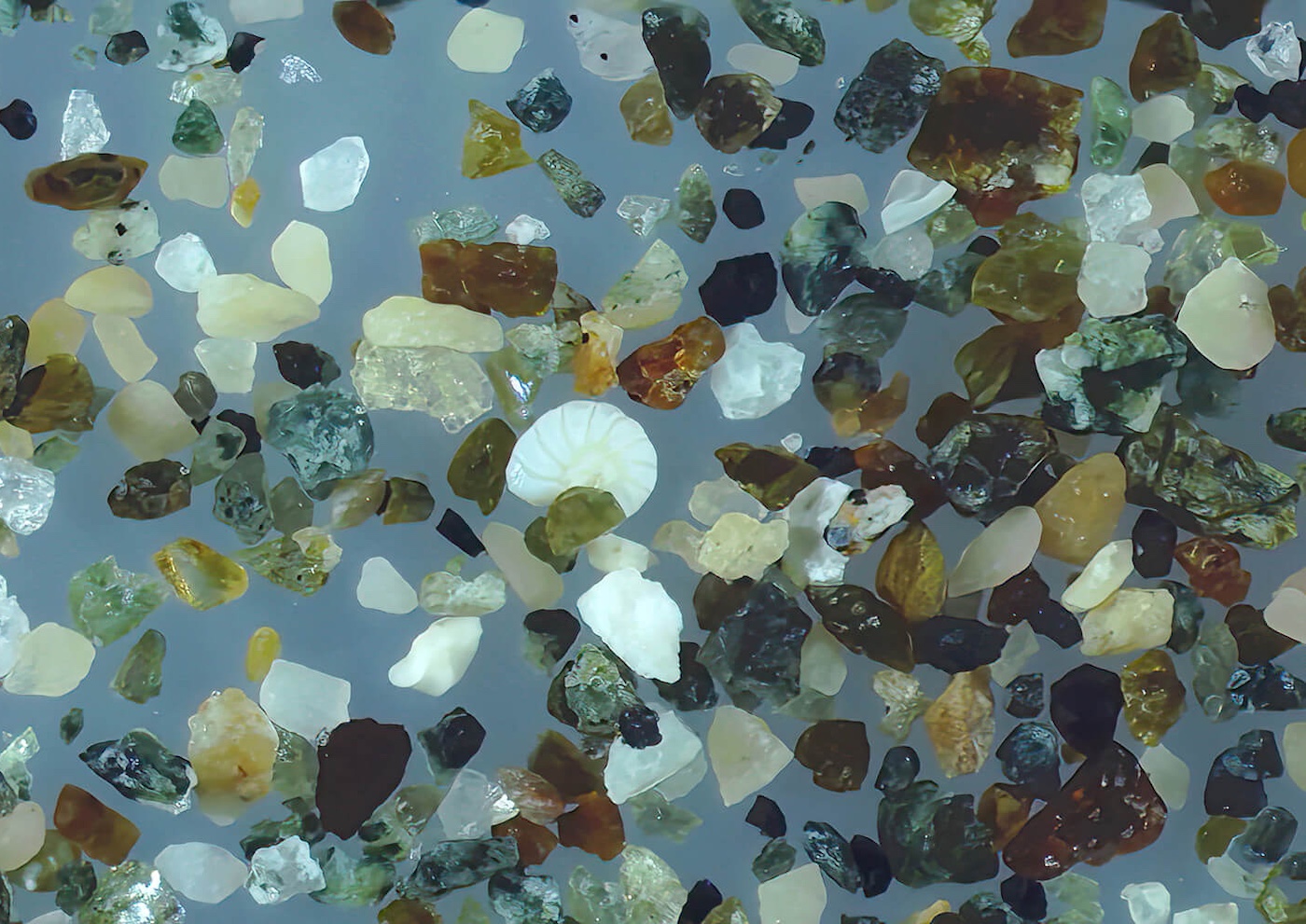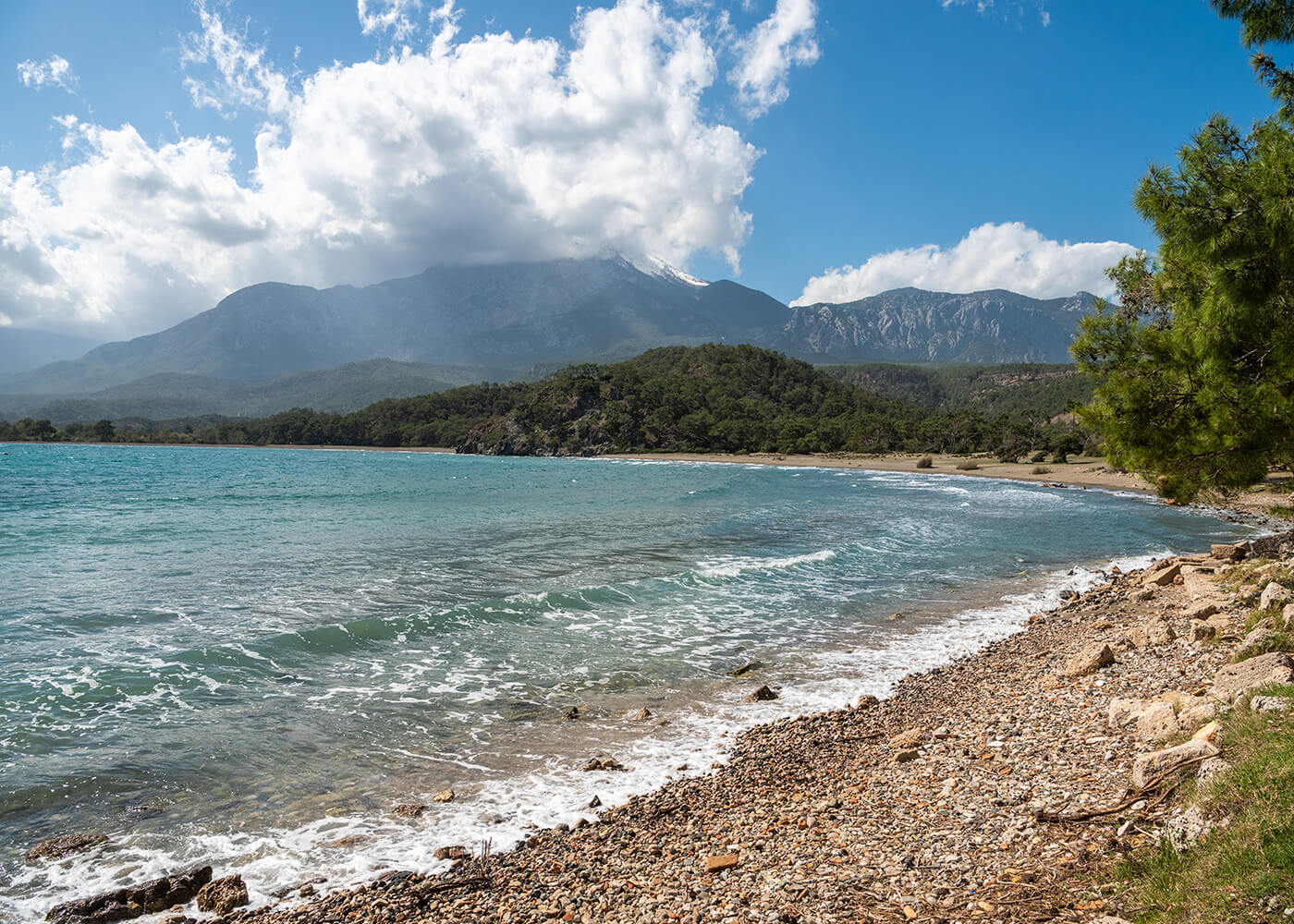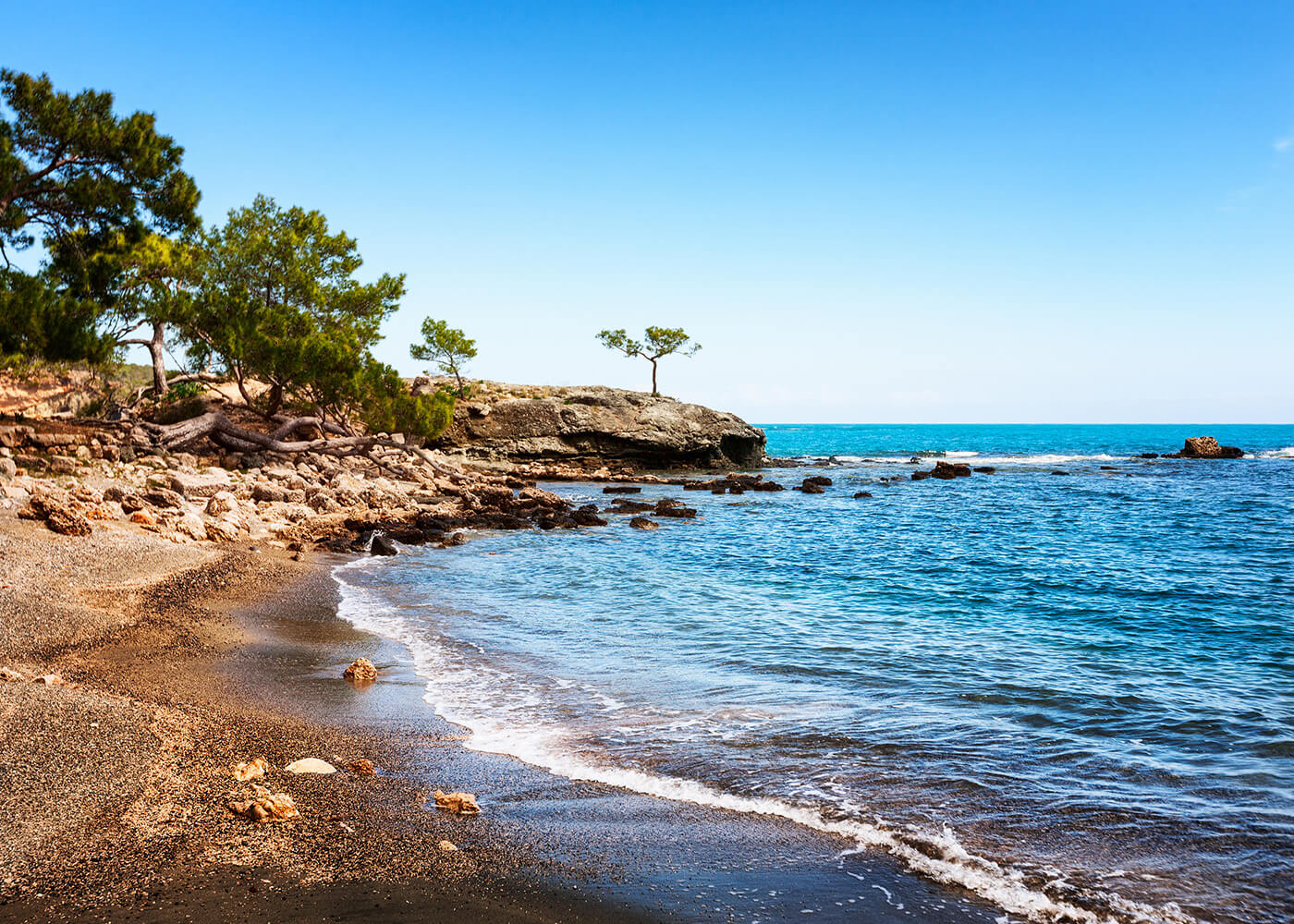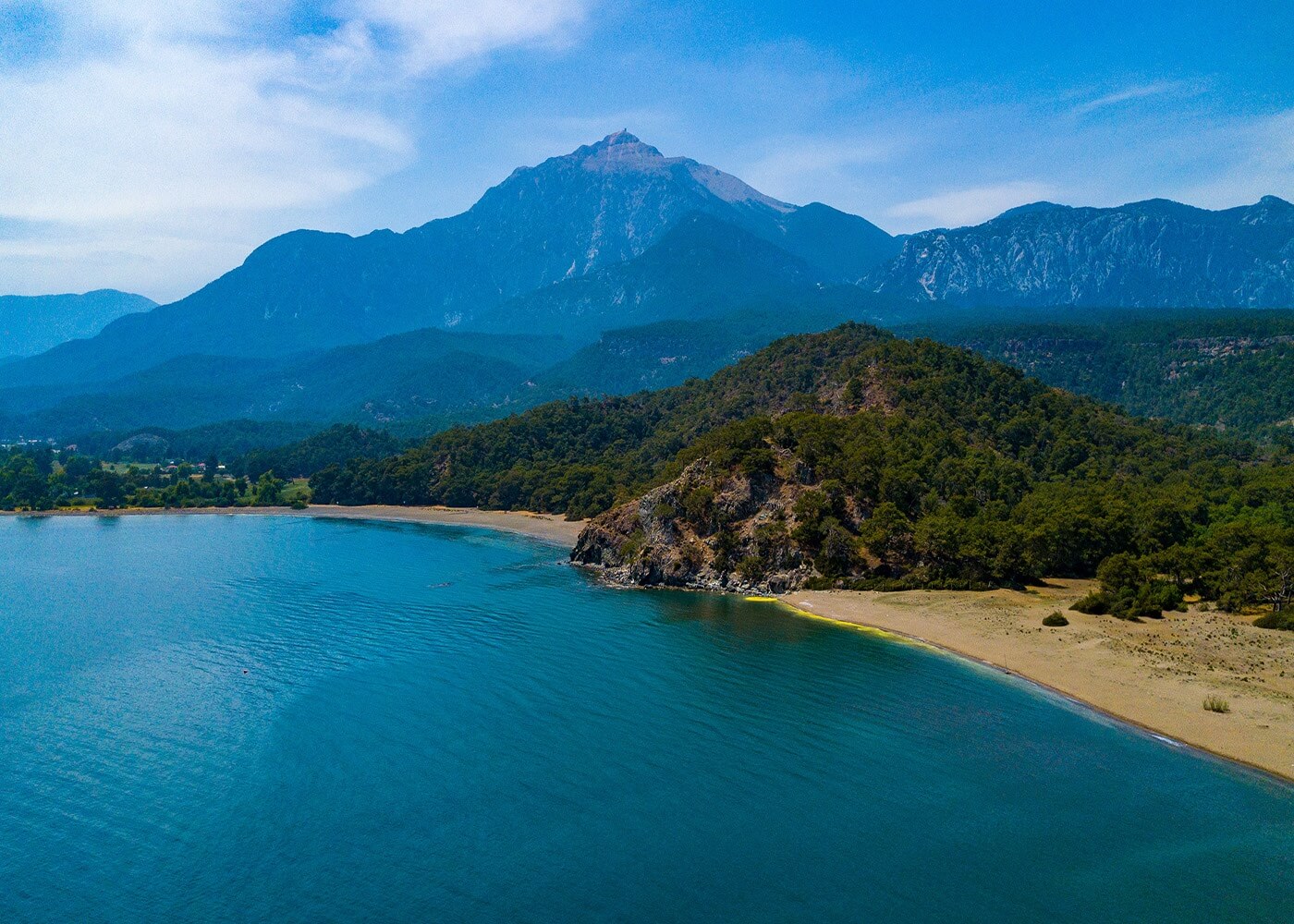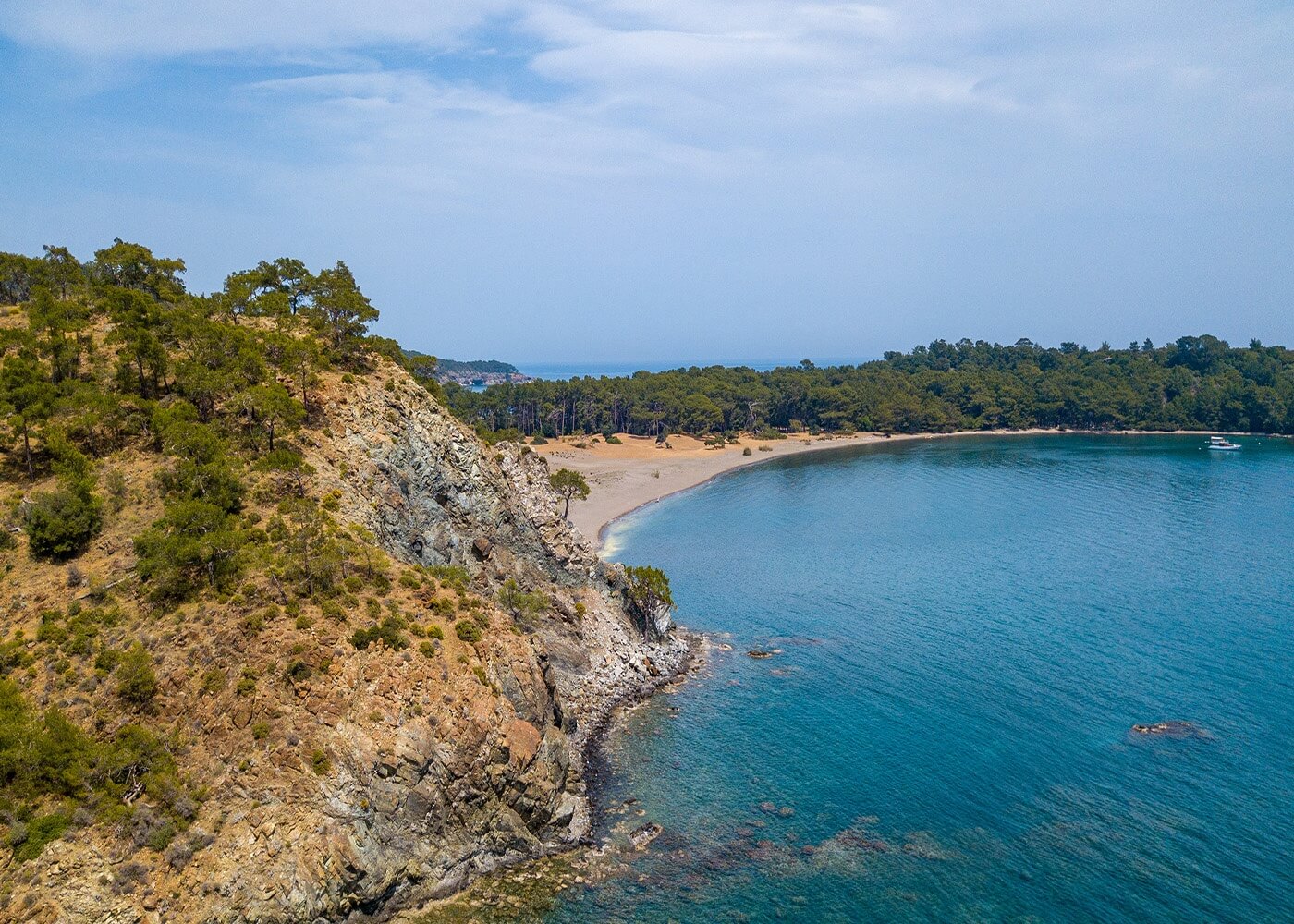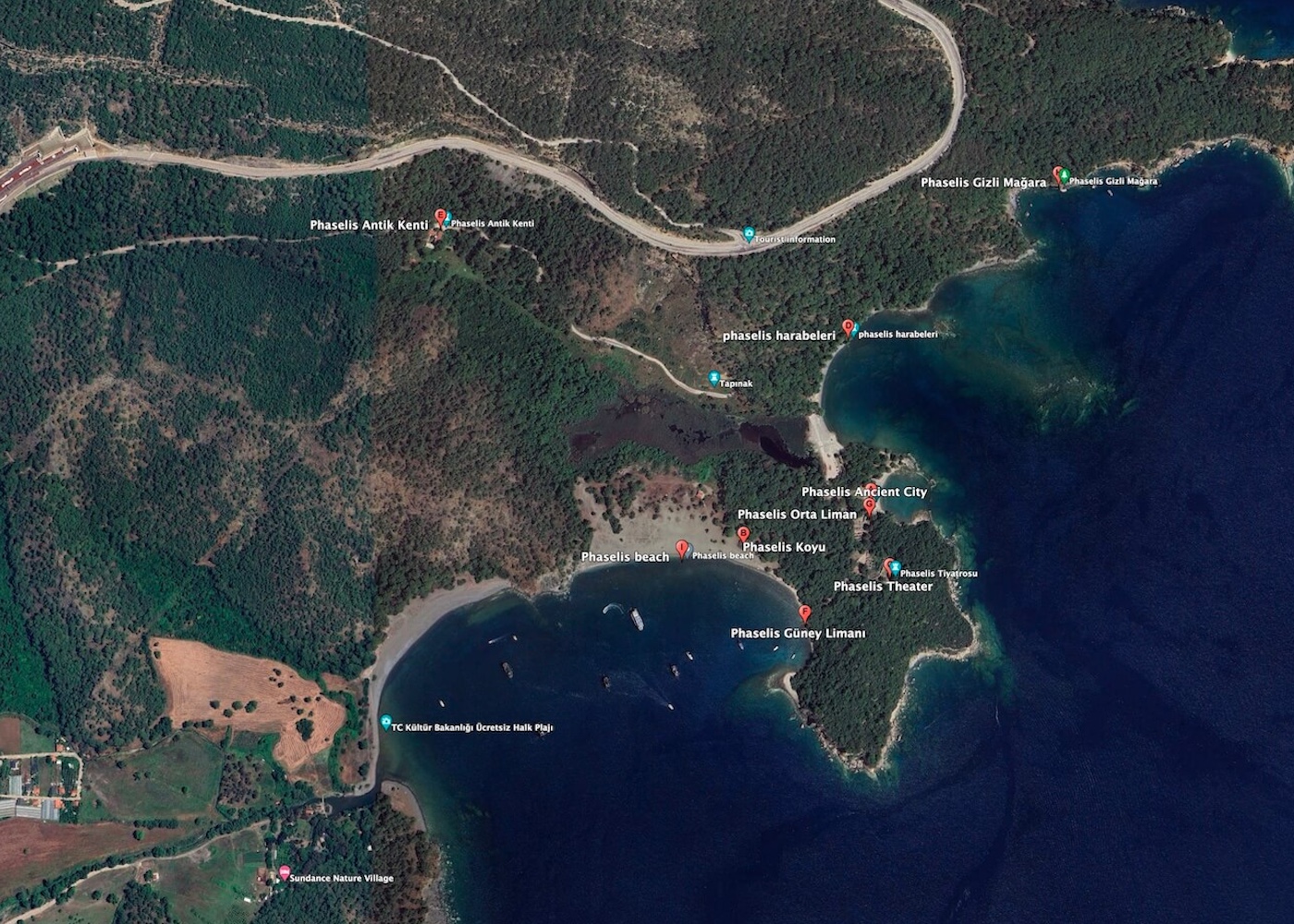Geographic Overview
Phaselis is a Greco/Roman archaeological site in Antalya province that features beautiful ruins by the shores of the Mediterranean Sea. Three pine tree sheltered bays along the Turquoise Coast make up Phaselis beach. Bay waters are clear and surrounded by green forests.

Sand Location
See where this sand sample was collected on Google Maps.
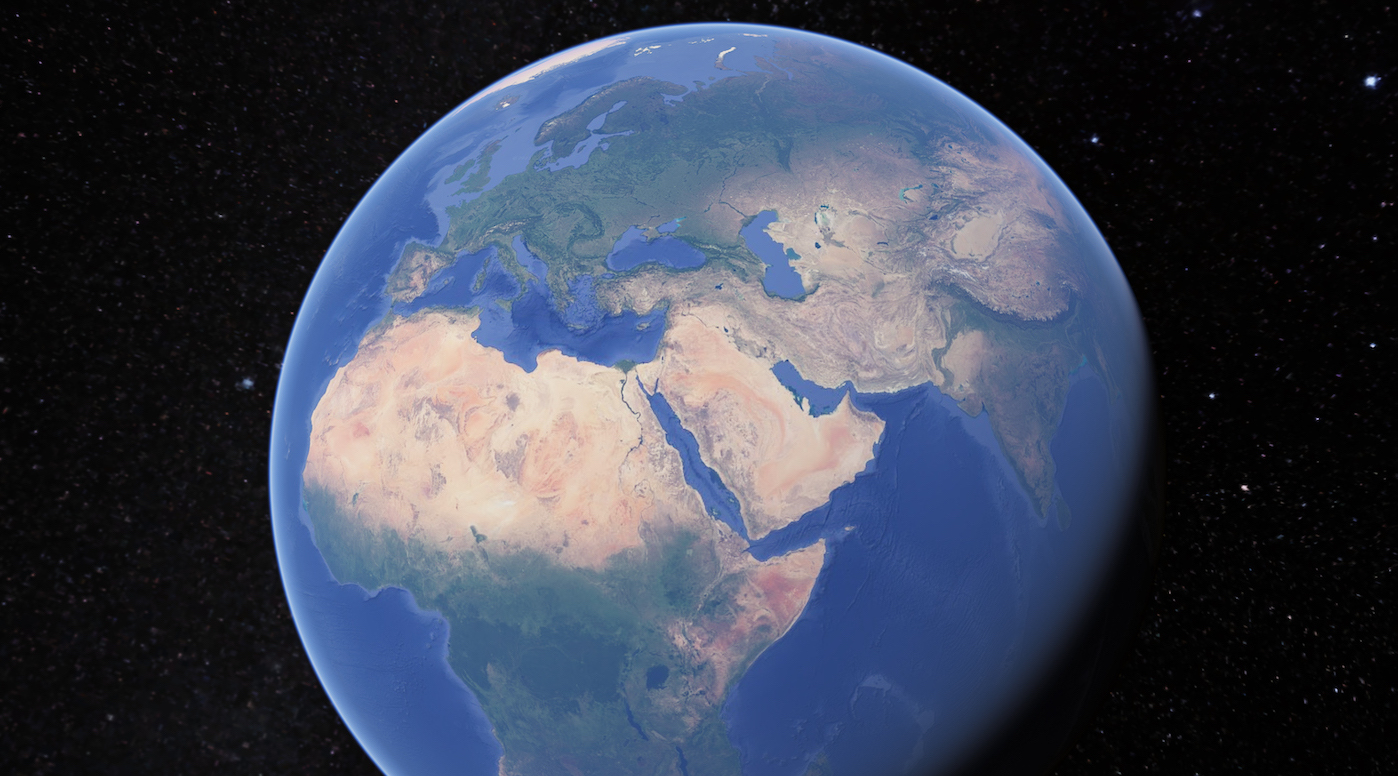
Virtual Sand Tour
Explore an interactive map of Phaselis on Google Earth.
Sand Gallery
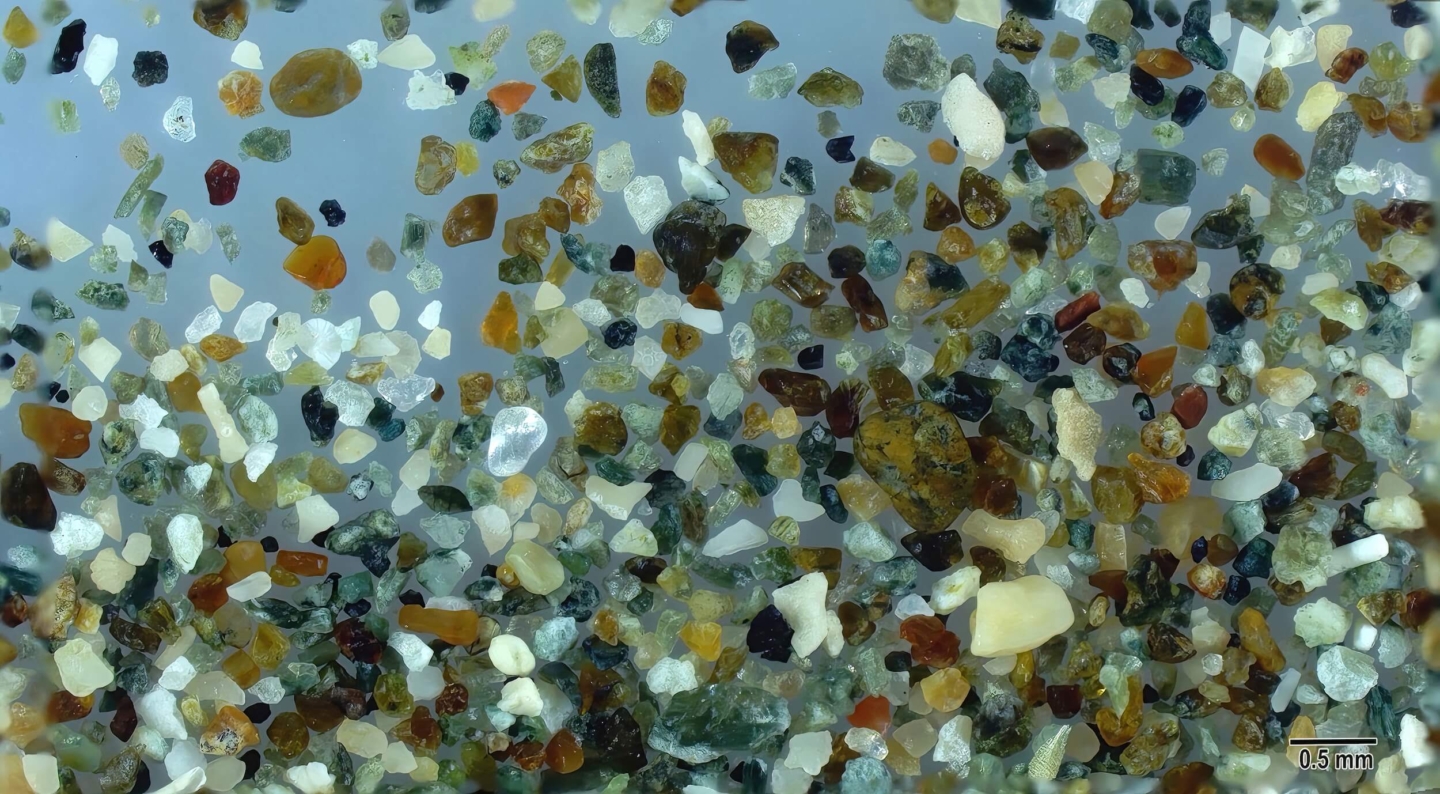
This colorful mixture of sand grains includes some clear and colored quartz grains, off white feldspar, and a larger tan, gray and black mottled grain of igneous rock just right of center.
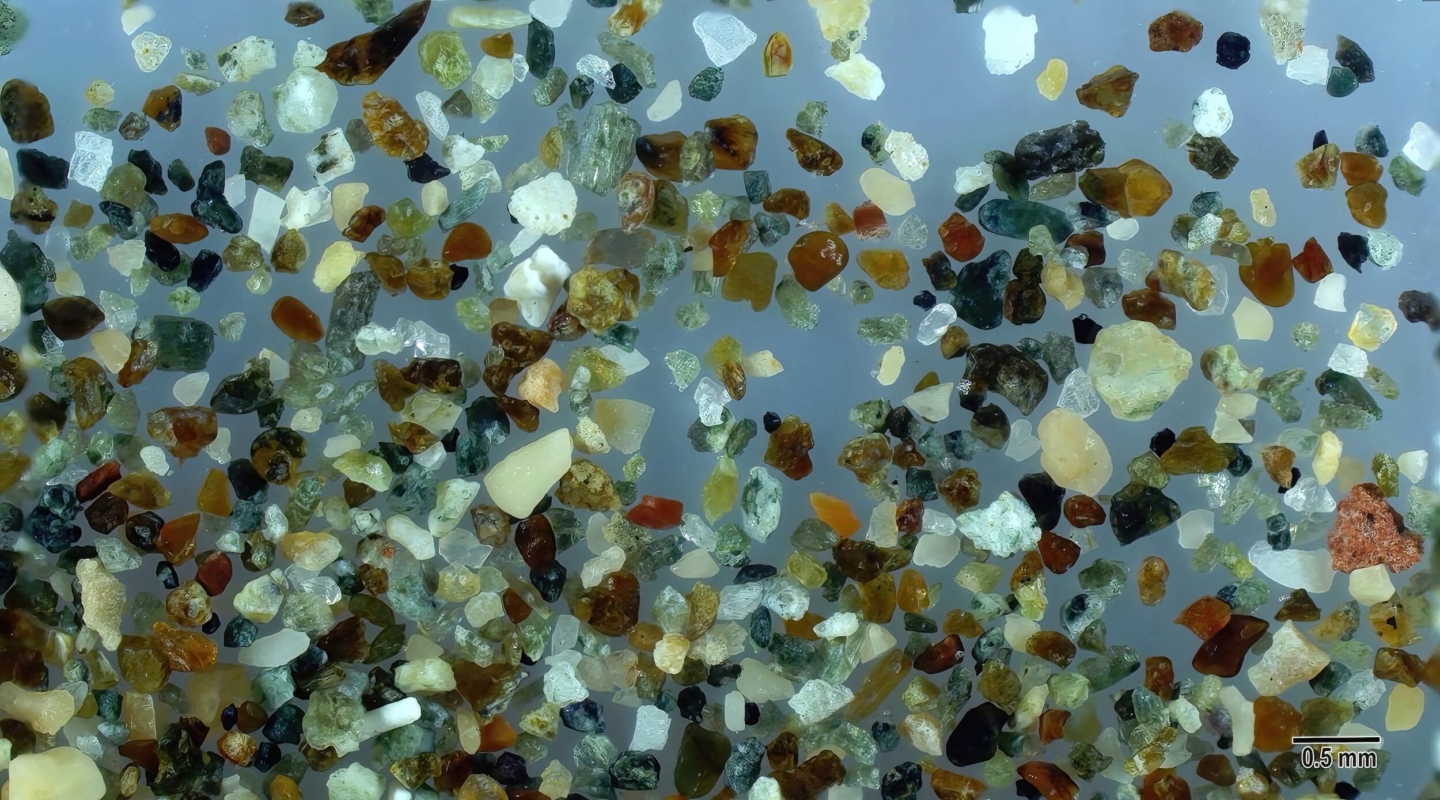
In this predominantly mixture of geological sand grains a round white fragment of a partially eroded foram grain is present near the upper left center of this view. Other off-white fragments of marine sand grains are also present in this sample.
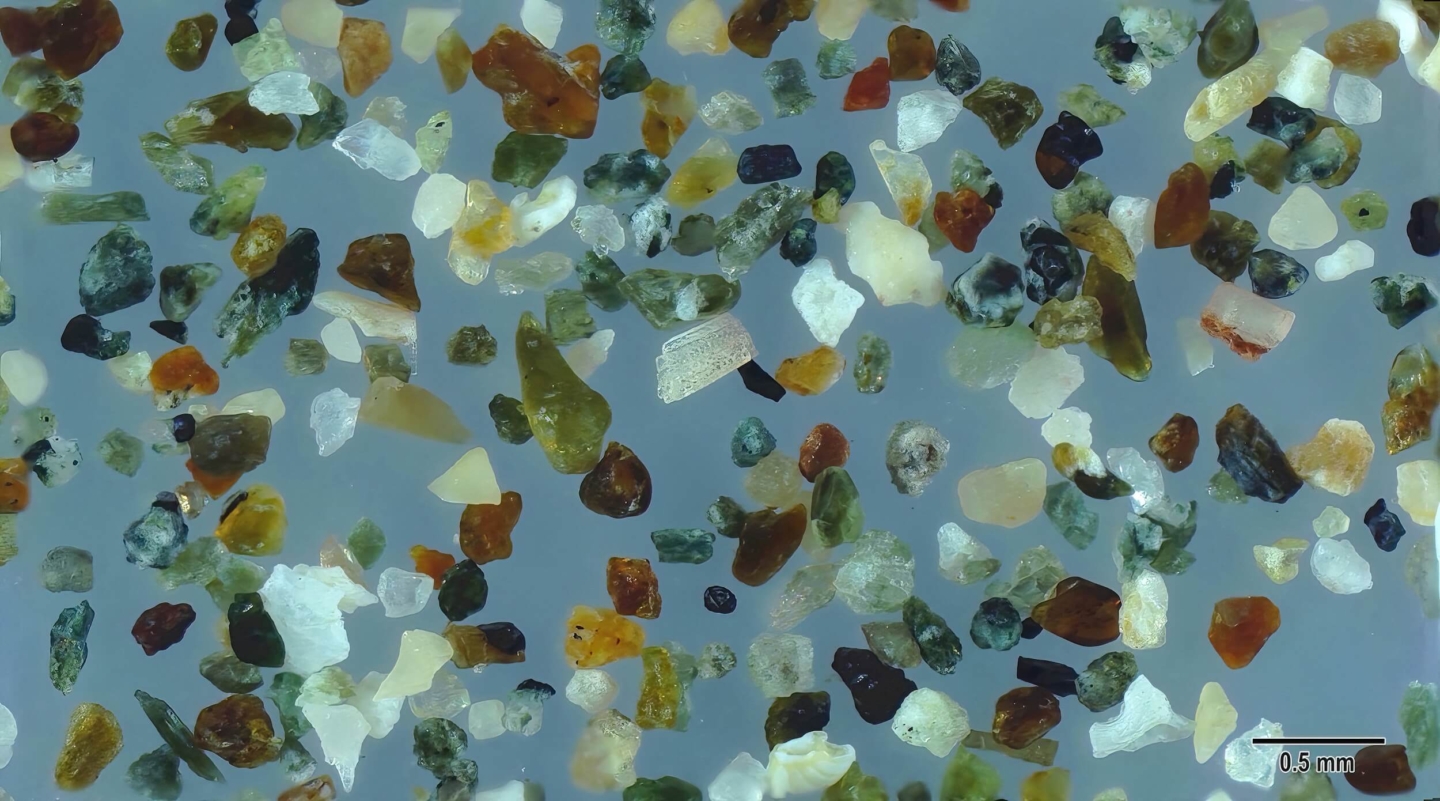
A semitranslucent finely fenestrated rectangular fragment of a sea urchin spine is present in the center of this image and a rectangular mollusk shell fragment with a reddish-brown stripe is near the middle right edge of this view. Most of the other green, brown, red, black and mottled dark and light grains are volcanic igneous fragments.
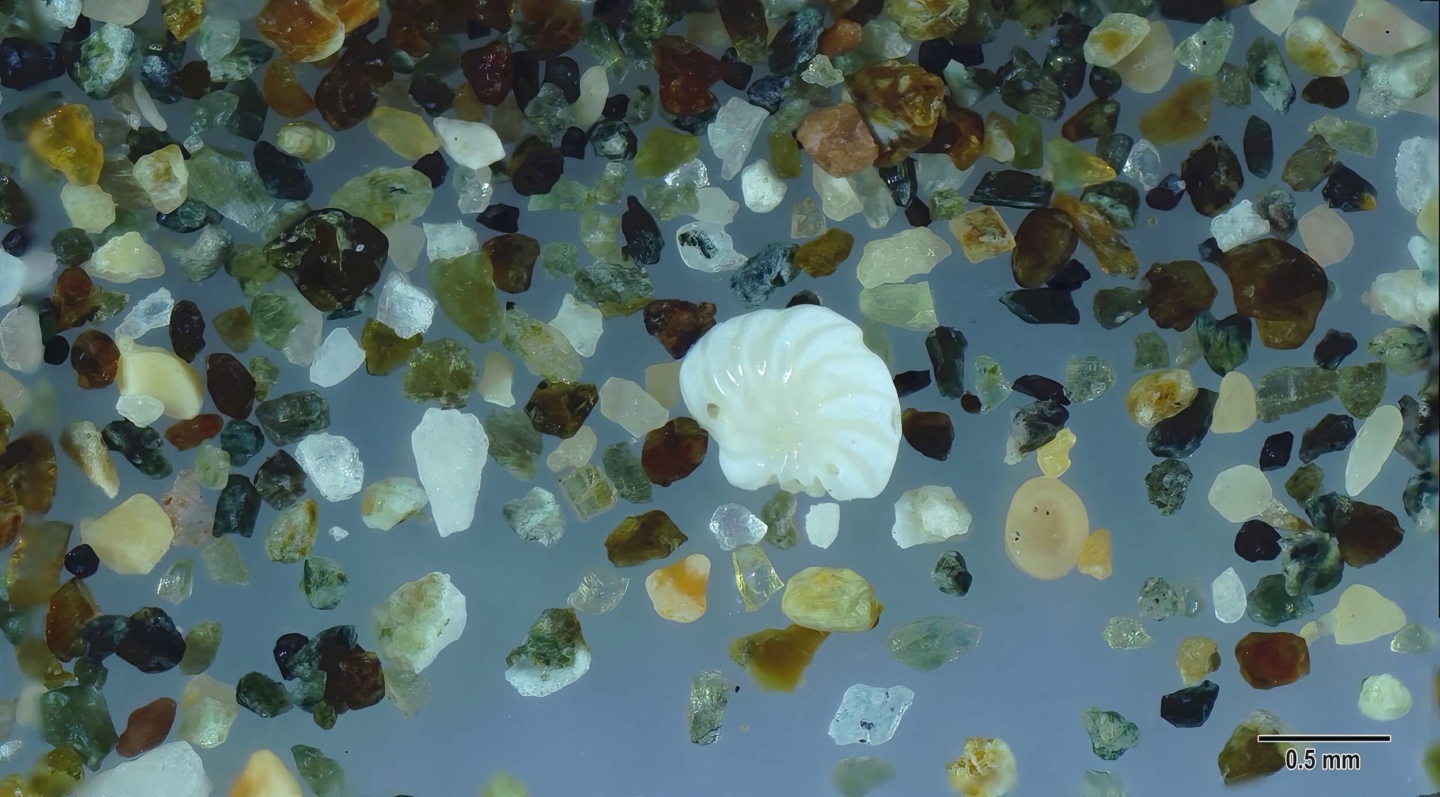
A large white multichambered foram in the center of this image stands out in contrast to small dark igneous sand grains.

